Online Marketing Tips Blog
In this Daily blog, I'll try to answer the most burning questions for online marketing that I get in my consulting business. We help online business owners who are in affiliate marketing, coaching, eLearning and Online Events every single day. I'll share that info with you!

The Power of a Hook in Ads and Social Media (and How to Create One)
Grabbing attention online is harder than ever. Scrolling through social media feeds or skipping through ads has become second nature for most of us. This is why mastering the art of an effective hook is essential for digital marketers and content creators.
A hook is more than just a flashy line or a catchy phrase; it’s the on-ramp to your message—the difference between your audience stopping to engage or scrolling away forever. Whether it’s an ad, a social media post, or any piece of digital content, your hook is the first impression you make, and you’ve got mere seconds to make it count.
By the end of this blog, you'll know exactly what makes a hook irresistible and how to create them to drive clicks, engagement, and conversions.
What Is a Hook (and Why Does It Matter)?
A hook is the first element of your content that grabs attention—it's the line that makes someone stop scrolling or pause for a moment to read further. In ads and social media posts, it’s often the headline or first sentence.
Why does a hook matter? Because online, you have about three seconds or less to make an impact. Without the right hook, even the most valuable message, product, or content will fail to reach people. A great hook works like a magnet, pulling your audience into your world.
Here are a few things a winning hook can accomplish:
• Capture Attention in a sea of distractions.
• Spark Curiosity, making people want to learn more.
• Create Emotional Resonance, tapping into people’s desires, frustrations, or dreams.
• Drive Action, be it a click, like, share, or purchase.
Think of your hook as the front door to your content—it has to be inviting enough for people to step inside.
The 4 Key Elements of a Killer Hook
To create a hook that stops people in their tracks, you need more than just clever wordplay. The best hooks incorporate four essential ingredients:
1. Curiosity Is King
Curiosity is a primal driver for engagement. The right level of mystery leaves your audience thinking, “I need to know more!”
To craft hooks that spark curiosity:
• Use incomplete information (but don’t confuse): “The One Thing Missing From Your Marketing Strategy.”
• Offer a surprising angle or twist on a known topic: “Stop Wasting Time With Keywords—Here’s What Actually Works.”
• Tease an unexpected benefit or insight they didn’t know they needed: “How I Doubled My Email Open Rates Without Changing My Content.”
👉 Example:
"Revealed: The Secret Sales Hack That Took Me From $0 to $10K Months"
2. Pain or Promise
Humans are driven by two motivations:
• Avoiding pain
• Gaining something they desire
A compelling hook taps into this by either addressing a problem people want to solve or painting a vision of an exciting result they want to achieve.
• Highlight a pain point your audience desperately wants to fix:
◦ “Struggling to Get Traffic? This Simple Strategy Doubles Your Clicks.”
• Offer a promise of value:
◦ “Get 10x More Leads With This One Change.”
👉 Example:
"Tired of Wasting Money on Ads? Here’s How to Make Every Dollar Count."
3. Punchy and Brief
Hooks are a first impression. If they’re too wordy or convoluted, they lose their edge.
Your hook must:
• Pack a lot of punch in as few words as possible.
• Be crisp, direct, and easy to understand at a glance.
• Flow well when spoken out loud.
👉 Example:
"Never Write a Boring Headline Again—Here’s How."
4. Uniqueness
If your hook blends in with every other post, it won’t stand out. Think about your unique perspective, story, or tone, and leverage that to create a hook your audience hasn’t seen before.
For example:
• Instead of “How to Save Money While Traveling,” make it, “The One Airline Loophole That Saved Me $1,240 Last Year.”
• Instead of “Learn Social Media Marketing Strategies,” make it, “Why Your Social Media Strategy Is Failing (And How to Fix It for Good).”
👉 Example:
"The Weird LinkedIn Hack No One Talks About—But Everyone Needs."
How to Create Scroll-Stopping Hooks in 6 Steps
Now that you know the anatomy of a killer hook, here’s how to apply it step by step:
Step 1: Know Your Audience
Before you even start writing, ask:
• What does my audience care about?
• What are their pain points?
• What results are they trying to achieve?
Understanding your audience is the foundation of every good hook. You’re not writing for yourself—you’re writing for them.
👉 Tip:
Use social media comments, reviews, and forums like Reddit or Quora to dig into the exact language your audience uses to describe their challenges and dreams.
Step 2: Start with a Question, Statement, or Bold Claim
Kick things off with a bang:
• Question:
◦ “Why Do Most Entrepreneurs Fail Before They Even Start?”
• Bold Claim:
◦ “Most Businesses Are Losing $1,000s Because of This One Mistake.”
• Relatable Statement:
◦ “If You’re Not Getting Leads From Your Posts, You’re Doing It Wrong.”
These grab attention because they immediately make the reader stop and think.
Step 3: Tap into Their Biggest Pain or Desire
Once you’ve hooked them, highlight their problem or biggest wish. For example:
• Pain-driven hook:
◦ “Is Keeping Up With Trends Making Marketing Exhausting?”
• Desire-driven hook:
◦ “Imagine Doubling Your Sales Without Spending a Dollar Extra.”
Step 4: Keep It Crisp
Boil your hook down to its essence. If you can cut a word without losing meaning, do it. Run your hooks through this test: would it make you stop scrolling if you saw it?
Step 5: Add Curiosity
Tease value without giving away all the information. For example:
• Don’t say:
◦ “You’ll Increase Your Social Media Engagement by Using Polls.”
• Instead:
◦ “The Social Media Trick You’re Not Using Yet (And It’s Free).”
Step 6: Test, Tweak, and Repeat
The truth about hooks? You won’t always get them perfect on the first try. Test different variations to see what resonates most with your audience. Analyze engagement metrics like click-through rates and impressions to choose the winners.
Real-Life Examples of Exceptional Hooks
Still unsure what good hooks look like? Here are a few examples you can adapt to your own ads or social posts:
Example 1 (Curiosity + Pain):
"Struggling to Create Content? This AI Tool is Your Secret Weapon."
Example 2 (Promise + Specificity):
"How I Booked 63 Sales Calls This Month Without Cold Emails."
Example 3 (Unique + Tease):
"What No One Tells You About Growing on Instagram (Until It’s Too Late)."
Why It’s Time to Reflect (and Hook!)
Whether you’re running a book funnel, crafting an ad, or writing a social media post, your hook can make or break your content’s success. By combining curiosity, emotion, brevity, and uniqueness, you’ll stop the scroll and spark engagement.
But theory only gets you so far. The next step is action. Start brainstorming hooks for your next ad or social post using the steps in this guide.
Need some help creating hooks that convert? Shoot us a message. Remember, the clock is ticking—you’ve got three seconds. Make them count.
The best copywriter for creating compelling hooks that I’ve come across is Russell Brunson. He has mastered the craft and his subtle hooks grab your attention and make you read the rest of his content.
To learn his techniques, check out his course on Selling Online [LINK]. Learn from the master himself.
Disclaimer: If you click on links we provide and make a purchase, we may receive compensation. There is never any guarantee of income in any of the links or programs we provide.
If you have specific questions you would like to see answered in this blog, please send them to me at [email protected]. I will try to address every question here.
If you follow the links in my blog, some of them will be affiliate links and I will be compensated if you purchase a course or product from these links. This is no way increases your price or changes my opinion on these courses. I only recommend things I use in my business.
For the absolute best training online for Affiliate Marketing, Coaching, Events & Masterminds and eLearning - Online Courses: Check out our Flagship Program Here.

Copyright © 2025 | All Affiliate Cash | All Rights Reserved
There may be affiliate links on these pages. When you follow them and purchase something, I may be paid a commission. This does not raise your cost of the item, and does not influence my opinion or review of the item in any way.
NOT FACEBOOK™: This site is not a part of the Facebook™ website or Facebook Inc. Additionally, This site is NOT endorsed by Facebook™ in any way. FACEBOOK™ is a trademark of FACEBOOK™, Inc.

